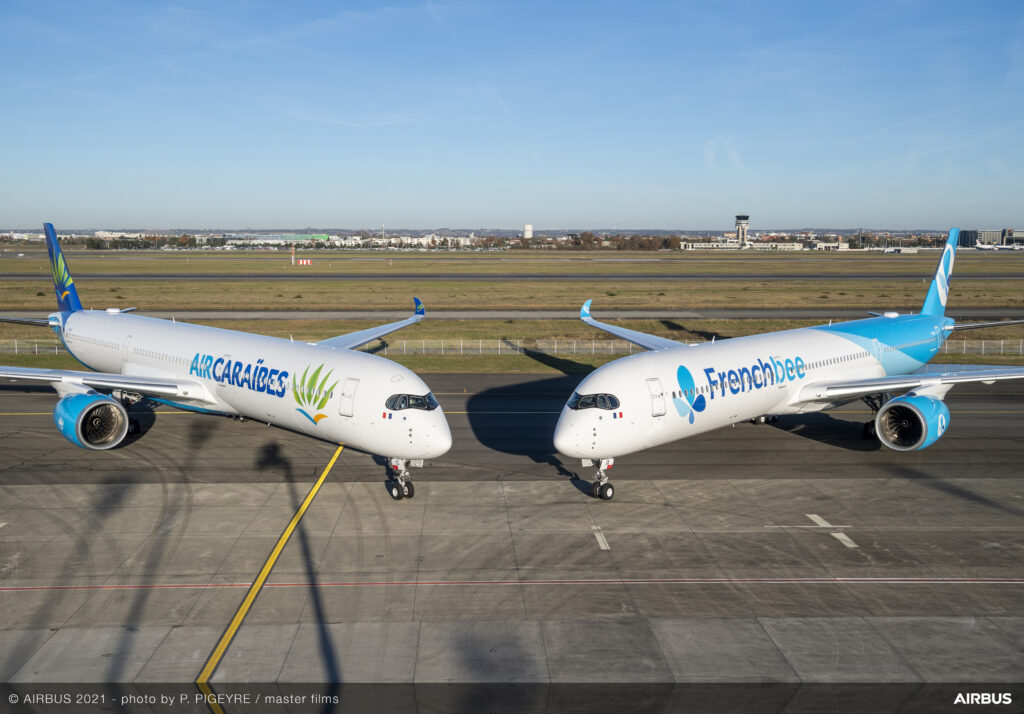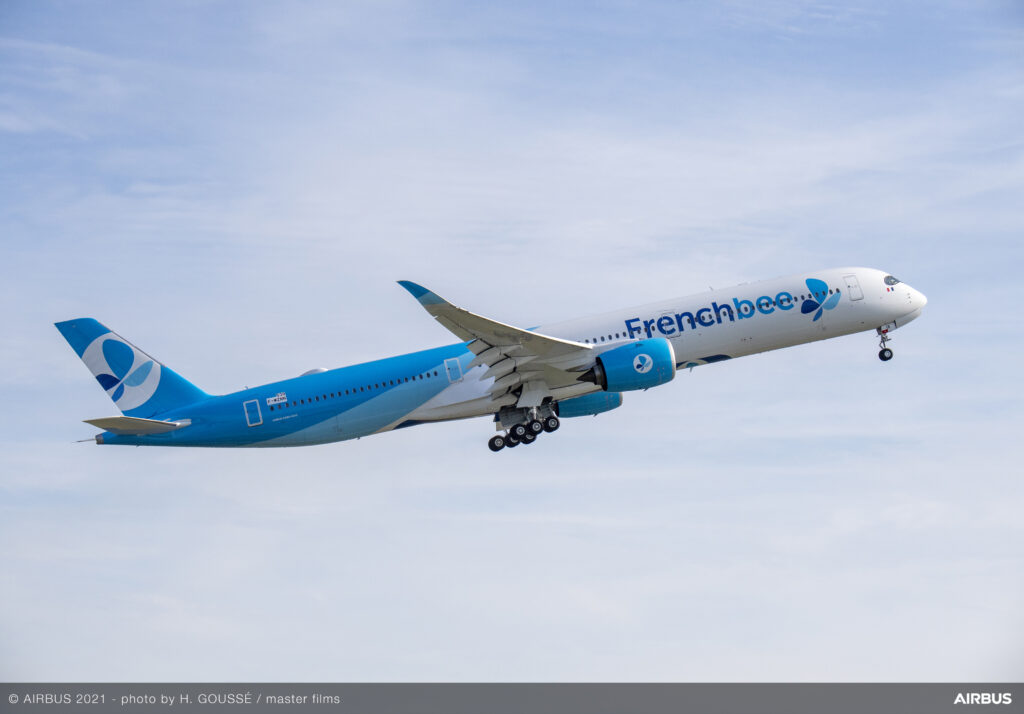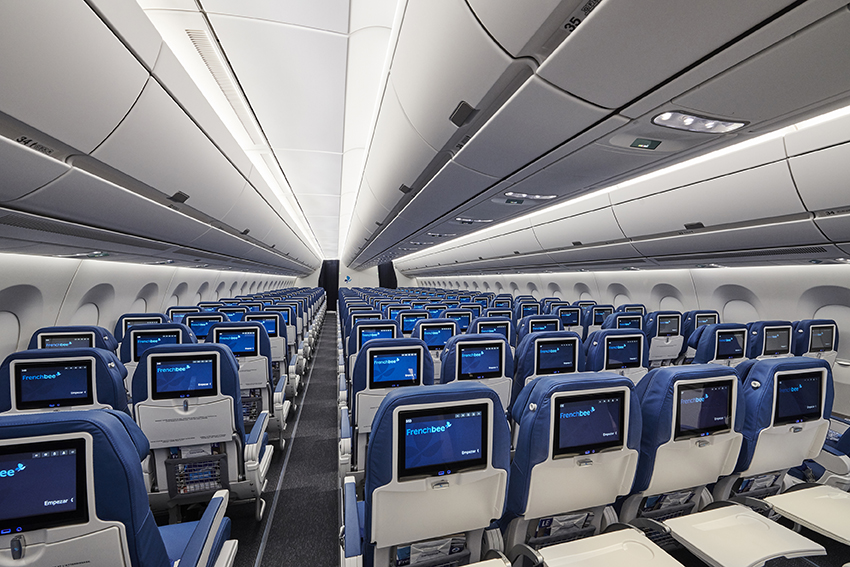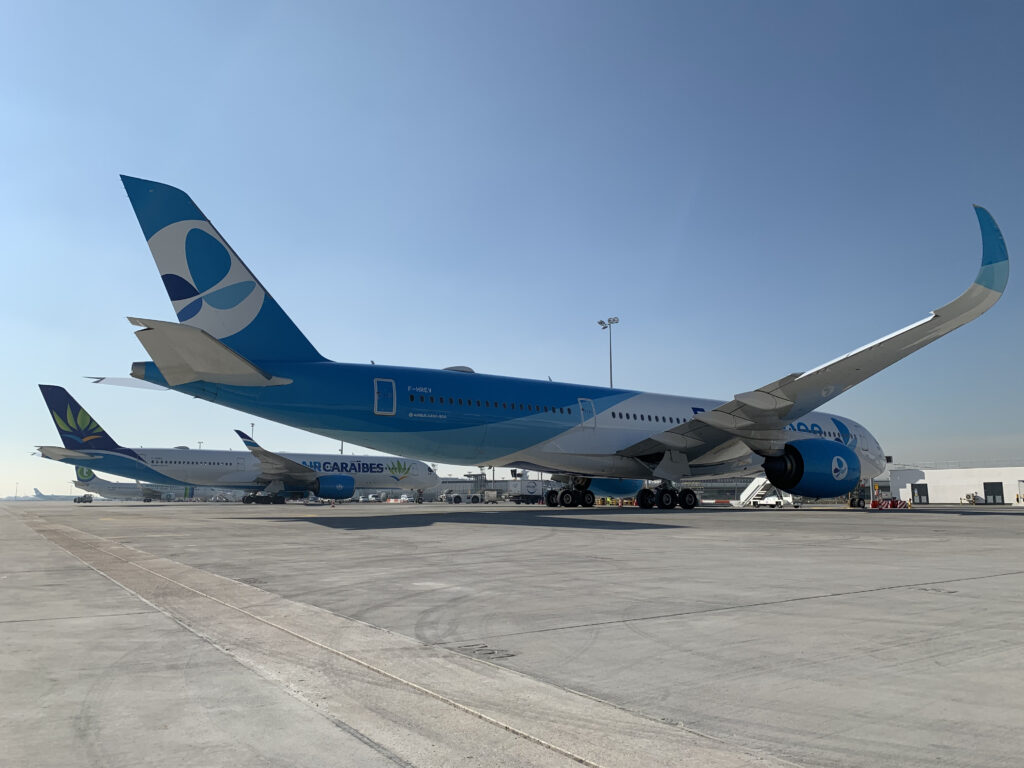Travel
How French Bee is Redefining Affordable Long-Haul Travel – Business Traveler USA

In an era where air travel often feels like a race to the bottom, French Bee has emerged as a breath of fresh air across the Atlantic, blending affordability with phenomenal service onboard its brand-new fleet of Airbus A350 aircraft.
This long-haul leisure airline, which took to the skies in 2016, has redefined budget travel and captured its passengers’ loyalty with its innovative approach and commitment to quality.
Nestled in Paris Orly, French Bee is carving out a path to assert itself as a dominant force in the leisure aviation sphere of its home country. As it continues to expand its footprint in the United States, Business Traveler engaged in a conversation with Andrea Raphanel, marketing executive for French Bee, delving into the airline’s evolution and its ambitions to steer the direction of long-haul/low-cost air travel in a market characterized by high stakes and formidable challenges.
The Birth of French Bee
The story of French Bee begins in 2014 when Marc Rochet, an experienced airline executive from Air Caraïbes (and the French Bee’s first CEO), and Jean-Paul Dubreuil, chairman of Groupe Dubreuil, brainstormed ways to expand their aviation ventures. By June 2015, Groupe Dubreuil announced “Sunline,” a project to create a new low-cost, long-haul airline based in France.
In March 2016, the airline was officially unveiled as “French Blue,” with ambitious plans for its first two years. These included launching flights from Paris to Punta Cana in September 2016 and to the French islands of Réunion and Mauritius in the summer of 2017. By November, however, the airline prioritized routes to Papeete (French Polynesia) and San Francisco, marking a significant shift in its strategy.

Photo: Courtesy of Airbus
A key moment came in November 2017 when French Blue applied for a U.S. foreign air carrier permit. Facing objections from JetBlue regarding using the word “Blue” in its name, the airline rebranded as “French Bee” in January 2018. A month later, with regulatory approval, French Bee launched its much-anticipated Paris Orly to Papeete service via San Francisco.
Expansion and Customer Acceptance
French Bee has rapidly expanded its footprint, with non-stop flights from Paris Orly to major U.S. cities such as Los Angeles, Miami, New York, Newark, and San Francisco. Additionally, it operates routes from San Francisco to Tahiti and from Paris Orly to Réunion Island.


Photo: Courtesy of Airbus
Raphanel highlights the airline’s success in the U.S. market: “Within our U.S. routes, Newark is by far the route with the most demand,” he says. “The customer satisfaction is overall very good on our U.S. routes whether in economy and in premium cabins. There are a lot of competitors on this route, but passengers really enjoy having an affordable alternative with good service, comfort, and high-quality product.”
Establishing a Strong Brand
In just seven years, French Bee has established a strong presence in continental France and Réunion, with growing recognition in the U.S. market.
“In terms of operations, French Bee has extensive experience, operating A350 aircraft for the past seven years, and was the first French airline to introduce this latest generation fleet in France,” Raphanel says.


Photo: Courtesy of French Bee
“We are starting to see a shift in the way Americans travel. They are looking for more flexible and affordable options and are thus open to new players,” he says. “With its French flair and high-quality service, French Bee is the right answer to meet these new customers’ expectations.”
French Bee is viewed as a long-haul, low-cost carrier, but the airline is redefining this perception. Raphanel explains, “French Bee is definitely a long-haul carrier with competitive costs,” he asserts.
And thanks to these competitive costs, Raphanel mentioned that passengers expect excellent service for the money they pay. “That’s why we don’t offer a business class – instead, we have premium and economy classes,” he says.
The airline maximizes the number of seats by not offering a business class. For example, the A350-1000 airplane has 480 seats, making it one of the most densely seated planes in the industry.
Additionally, due to its high seating capacity, the A350 wide-body aircraft is one of the most environmentally friendly planes in the world. Its cabin configuration results in the lowest carbon emissions per available seat kilometer compared to any other aircraft.


Photo: Courtesy of French Bee
“We strongly believe that low prices can be combined with good service. Customers are often surprised to see that, with very attractive fares, a company can offer standard comfort with the most modern fleet on the market.”
According to Raphanel, French Bee’s offer is “all about what matters to the passenger: the prices include the essentials and give the choice to the customer about the options and the customized experience.”
Premium Class: Affordable Comfort
On the front of all their Airbus A350s, French Bee’s Premium class offers a competitive and comfortable experience, attracting business and leisure travelers.


Photo: Courtesy of French Bee
Raphanel elaborates, “French Bee offers a very competitive premium package in Premium Class, featuring wider and comfortable reclinable seats with generous dimensions, exceptional legroom, and a large screen. All the attributes of a premium experience are equal in quality to those offered by major airlines with affordable prices.”


Photo: Courtesy of French Bee
French Bee’s Premium class is becoming increasingly popular among business travelers. According to Raphanel, there has been a noticeable rise in the number of business passengers opting for this premium cabin. These passengers are drawn to the cost-saving benefits that come with flying for work.
According to the airline, the Premium Economy offer is proving to be appealing to business travelers who prioritize productivity, comfort, and staying within budget while ensuring a well-rested arrival at their destination.
Culinary Offerings
In addition to the added comfort provided by the larger seats, Raphanel notes that French Bee prides itself on providing “a truly delightful culinary experience,” particularly in its Premium class.
According to the airline, when passengers fly up front, they can enjoy a range of beverages, including juices, soft drinks, and alcoholic drinks, all included in the ticket price.
Raphanel emphasizes that the essence of French cuisine truly shines through in the dining experience offered by French Bee. “It’s a far cry from the standard ‘chicken or fish’ choice. On our flights, the food is consumed and savored to the fullest!”


Photo: Courtesy of Enrique Perrella
While the airline once toyed with the idea of introducing a meal ordering system through the in-flight entertainment (IFE) system for economy class, this idea was ultimately discarded. “The decision was made to prioritize an ‘à la carte’ service for customers rather than enabling this feature on the IFE,” explains Raphanel.
“This approach allows French Bee’s crew to deliver personalized service on board, exceeding the passengers’ stated preferences and providing them with the best possible advice. Additionally, it fosters a genuine connection between the airline’s clients and staff, which cannot be achieved when ordering through the IFE.”
Tahiti and the Olympics
The airline’s current service between San Francisco and Papeete, Tahiti, is particularly noteworthy. Raphanel emphasizes the significance of Tahiti as one of its flagship destinations, holding a special place for the company and its clientele.


Photo: Bora Bora. Courtesy of Four Seasons
“Tahiti is one of our flagship destinations, and it is a special place for the company and its clients. This destination appeals to our French and American target audiences due to its breathtaking landscapes and the local culture. Thanks to our affordable prices, passengers can enjoy Tahiti without compromising on the quality of their travel,” he says.
On the French mainland, ahead of the Paris Olympics, French Bee is ramping up its preparations to accommodate an influx of travelers. Raphanel discloses that they are closely collaborating with ADP (Aéroport de Paris) and other relevant entities to ensure a seamless travel experience.


Olympic Games logo on the Arc de Triomphe / Photo: Courtesy of @Paris2024/PhilippeMillereau/kmsp
“We launched attractive fares/offers during that time,” he says. “We also planned for more staff on board and at the airport to welcome people. We have communicated more, so people are inspired to travel to Paris.”
Moreover, since the airline is based in the closer-to-city-center Orly airport, passengers will be able to reach the city straight from the terminal to the metro. French Bee hopes that even though congestion will make the operation at Orly more difficult, its passengers will be able to reach their destination with ease
Future Growth and Expansion
French Bee is not resting on its laurels and continues to expand its horizons. The airline constantly seeks new routes and expands its fleet to keep up with the increasing demand. “We are always on the lookout for opportunities,” says Raphanel. “With the group and market demand growing, we are particularly focused on studying new areas in the coming years.”


Photo: Courtesy of Enrique Perrella
In the meantime, the airline expects the addition of a new A350-1000 by the end of the year. “This acquisition will support the increase in flight frequencies and facilitate our continued growth in the months and years ahead,” says Raphanel.
French Bee’s evolution from its inception to its current position as a strong player in the long-haul leisure airline market is a testament to its innovative strategies and dedication to customer satisfaction. French Bee seems poised to reach even greater heights with a modern fleet, competitive pricing, and a commitment to quality service.
As Andrea Raphanel eloquently states, “With its distinct French touch and commitment to exceptional service, French Bee is the ideal choice to meet the evolving expectations of our new customers.”









